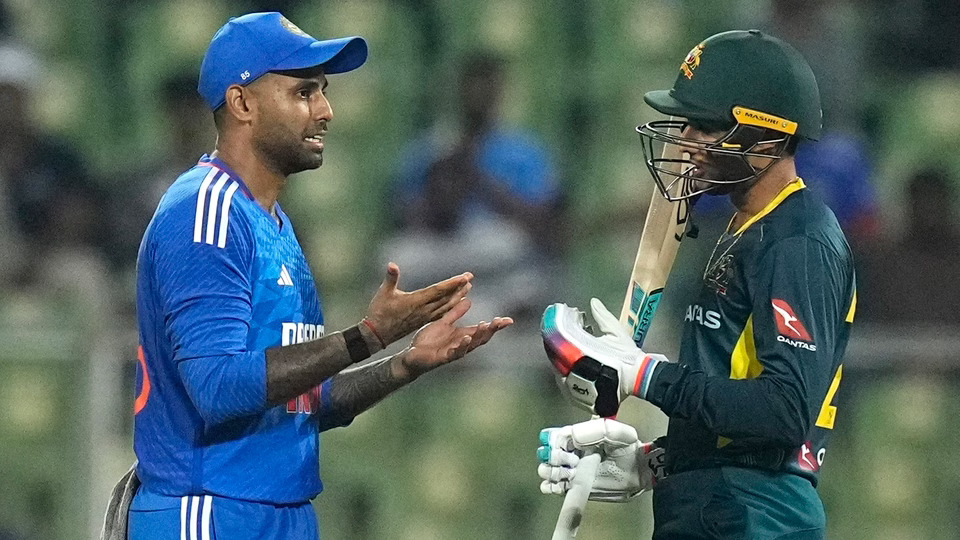“There are two teams out there; one is trying to play cricket and the other is not.”
Those words, uttered by Bill Woodfull, Australia’s captain, to Pelham Warner, England’s manager, during the Bodyline series over 90 years ago are an integral part of cricket lore. Watching the third T20I between India and Australia in Guwahati on Tuesday night, one was reminded of those famous words. Only, in this case, neither team was playing cricket. What we saw instead was some bat-ball sport on speed or steroids which bore little resemblance to the game that most of us fell in love with.
It is part of the tragic infantilising of cricket, mostly by broadcasters who care only about the bottom line, that entertainment is now equated with fours and sixes. That cricket, for nearly a century and a half, has been a contest between bat and ball has been forgotten in the urge to draw in viewers with the attention span of gnats. When that happens, and curators are instructed to produce pitches like the abominations seen in this series, you get games like the three we’ve had so far, with the bowlers almost irrelevant.
Years ago, when online games became a thing, Stick Cricket became popular. Once you figured out the coordination between the keys you had to use, it wasn’t unusual to hit upward of 24 runs in an over. But the thing with Stick Cricket, and other games that simplify such a complex and beautiful sport, was that you got bored of it so quickly. Where there’s no challenge, where’s the thrill?
We’re not seeing things through rose-tinted glasses here. One-day cricket was envisaged as weekend entertainment, a distraction amid the more serious business of county championship games. And as the years passed, almost every rule change and tweak loaded the dice more and more in favour of the batters. Now, though, we’ve reached a stage where bowlers could soon be replaced by bowling machines, and it wouldn’t make the blindest bit of difference.
The genius who decided that crowds want only fours and sixes knew even less about cricket than Sepp Blatter knew about football. To explode that nonsensical myth, just consider the matches Indian cricket fans cherish the most. In 1983, Kapil Dev’s team won the World Cup against all odds after the bowlers defended a total of 183. In the 2011 final, Zaheer Khan started off with three consecutive maidens as a mighty Sri Lankan line-up was restricted to a par score of 274.
The last time India won a global event, the Champions Trophy in 2013, the bowlers defended a total of 129 in a game reduced to 20 overs a side. You may well point out that each of those three results was in another format. So be it. Look then at India’s most memorable T20 win, the World T20 final against Pakistan in 2007.
This time, the bowlers defended 157, with RP Singh taking 3-26 and Irfan Pathan summoning up a sublime spell of 3-16. In that match, India struck 13 fours and 4 sixes, while Pakistan’s ill-fated chase contained 11 fours and 8 sixes. You don’t need to be Einstein to work out that there was less than a boundary an over in that unforgettable match.
Contrast that with the first game of this T20 series in Visakhapatnam. Australia smashed 24 fours and 9 sixes, while India’s successful chase of 209 contained 19 fours and 11 sixes. In short, more than a fourth of the balls bowled went to the rope or sailed beyond it. Jason Behrendorff had tidy figures of 1-25, but eight of the 11 bowlers went at more than 10 an over.
It was even worse in Guwahati. India plundered 23 fours and 9 sixes, and still managed to lose because Glenn Maxwell and friends thumped 26 fours and 9 sixes. Behrendorff, with outstanding figures of 1-12, was the only one on either side with an economy rate under 8.
Yes, these are two sides considerably weakened as a result of the series being played right after the World Cup. But these are not dead, end-of-season pitches. This is almost the start of the cricket calendar in India, and all it needs for a more even contest between bat and ball is for some grass to be left on the surface. Let’s see how much of this stand-and-deliver nonsense would come off once the ball started deviating off the straight.
In the years leading up to his retirement from TV commentary, Michael Holding, West Indies fast bowling legend, was characterised as a jealous and churlish old fogey for saying that T20 was ‘not cricket’. When it comes to this series, those words couldn’t ring truer. The day we call glorified batting practice cricket, we really are in trouble.




